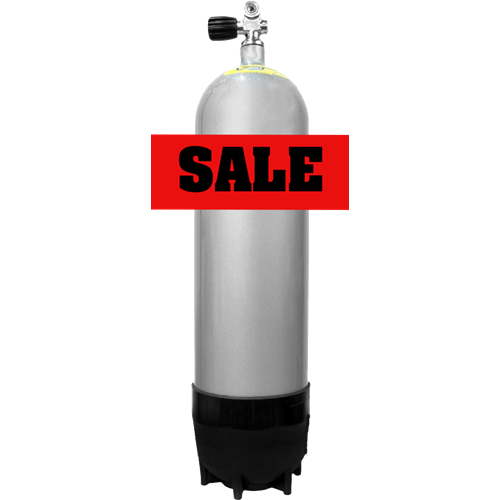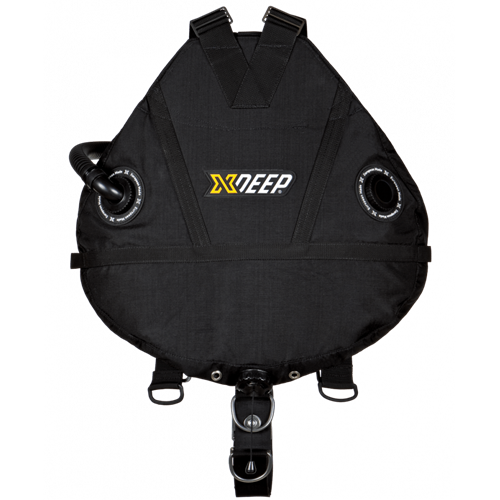Sidemount Diver
With a side of fun!
The PADI Sidemount Diver Course with AQUASUB SCUBA DIVING CENTRE
Sidemount diving is a type of scuba diving where the diver wears their tanks on their sides, rather than on their back like in traditional back-mounted scuba gear. In sidemount diving, the tanks are usually smaller and are attached to the diver's harness using special mounting systems, which allows for greater flexibility and maneuverability underwater.
Sidemount diving is particularly popular among technical divers, cave divers, and those who need to access tight or confined spaces underwater, as it provides greater ease of movement and enables the diver to carry multiple tanks without the added weight and bulk of a back-mounted system.
One of the main advantages of sidemount diving is that it allows for greater redundancy and safety, as the diver is able to carry more than one tank and can easily switch between them in case of an emergency. It also enables easier gas management and reduces the risk of running out of air while diving.
Sidemount diving requires specialized training and equipment, and is not typically included in standard recreational scuba diving courses. If you are interested in learning how to sidemount dive, you will need to take a specialized sidemount diving course from a certified instructor, who will teach you the proper techniques and safety procedures necessary for this type of diving.

There are several reasons why you might want to try sidemount diving:
-
Increased flexibility: With sidemount diving, you have more flexibility in terms of tank placement, which can make it easier to maneuver in tight spaces or when diving through wrecks or caves.
-
Improved streamlining: Sidemount diving can improve your streamlining in the water, as the tanks are placed alongside your body rather than on your back. This can reduce drag and improve your overall hydrodynamics.
-
Enhanced safety: Sidemount diving can be safer than traditional back-mounted diving in some situations, such as when diving in overhead environments or when using decompression gases. With sidemount diving, you have easier access to your tanks, which can be crucial in emergency situations.
-
More comfortable: Some divers find sidemount diving to be more comfortable than traditional back-mounted diving, as the weight of the tanks is distributed more evenly across the body. This can reduce strain on the back and shoulders and allow for longer and more enjoyable dives.
Course Overview
Having scuba tanks on your back isn't a requirement for exploring the underwater world. Many scuba divers have discovered the joy of mounting cylinders on their sides. Sidemount diving gives you flexibility and streamlining options. Plus, you don't have to walk with heavy cylinders on your back - just enter the water, clip them on and go. Sound interesting? Sign up for the PADI Sidemount Diver Specialty course.
If you're a PADI Open Water Diver who is at least 15 years old, you can enroll in a PADI Sidemount Diver course.

What You Will Learn
Along with learning about the many benefits of diving with a sidemount configuration, during one confined water and three open water scuba dives you'll learn how to:
- Properly assemble and configure sidemount scuba diving equipment.
- Trim your weight system and sidemount gear so you're perfectly balanced in the water.
- Manage gas by switching second stages as planned, if wearing two cylinders.
- Respond correctly to potential problems when sidemount diving.
Prerequisites & Requirements
- Be at least 15 years old
- Certified Open Water Diver or above
Equipment Requirements
- Sidemount Configuration Scuba Equipment (available for rental)
- Two Cylinders
- Two Regulators
- A Sidemount Harness
- Sidemount Equipment Essentials can be found here.
For all your learning materials and equipment, contact AQUASUB SCUBA DIVING CENTER.
Paperwork:
- Student Enrollment Form - All students must complete the intake form
- Liability and Risk Acknowledgement Forms - All students must complete, print and sign the questionaire and liability releases.
- Medical Questionaire - If Form 2 has ANY questions you have answered YES to, you must complete form 3 and have it signed by your personal physician
Choose your next adventure!
Many shipwrecks are often found in deeper water. That’s why the PADI Deep Diver course is a natural companion to the PADI Wreck Diver course. Sometimes you can take these two specialties concurrently.
Other training to consider is the PADI Enriched Air Diver course on your way to PADI Master Scuba Diver.
For more information about this or other PADI courses have a chat with one of the AQUASUB SCUBA DIVING CENTER Team members.
Related Products



